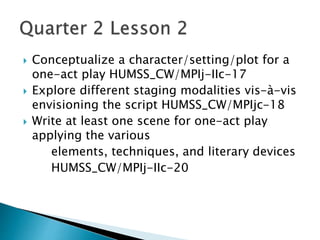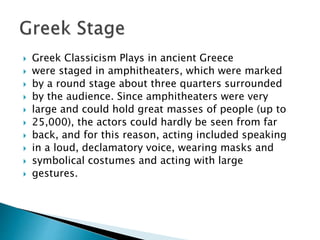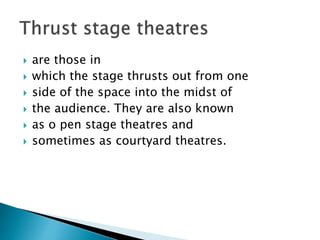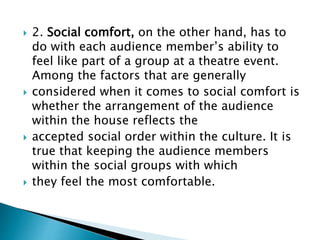The document discusses the history and evolution of theatrical stages from ancient Greek times to modern proscenium stages. It describes the key elements and features of different historical stage types, including the orchestra, theatron, skene, and parodoi of Greek amphitheaters; wagons used for medieval plays; Elizabethan open-air theaters; smaller indoor Restoration theaters; and modern proscenium stages that clearly separate actors and audience. The document emphasizes how stage design evolved alongside changes in theatrical practices, resources, and audience expectations over different eras.







































